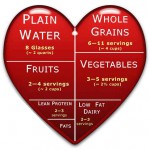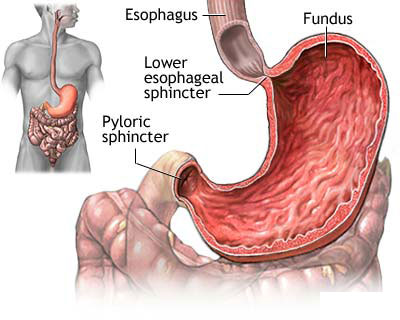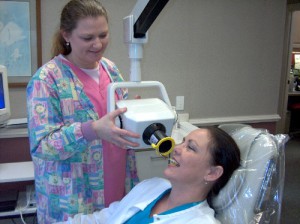Study: Positive outlook tied to good heart health
 Be happy – it seems to be good for your heart.
Be happy – it seems to be good for your heart.
Scientists have long known that Type A personalities and people who are chronically angry, anxious or depressed have a higher risk of heart attacks.
Now a Harvard review of the flip side of that psychology concludes that being upbeat and optimistic just may help protect against heart disease.
Rather than focusing only on how to lessen heart risks, “it might also be useful to focus on how we might bolster the positive side of things,” said lead researcher Julia Boehm of the Harvard School of Public Health.
Boehm reviewed dozens of studies examining a positive outlook – as determined by various psychological measurements – on heart health. Optimism in particular seems key, as a number of studies found the most optimistic people had half the risk of a first heart attack when compared to the least optimistic, Boehm said.
Studies Question the Pairing of Food Deserts and Obesity
It has become an article of faith among some policy makers and advocates, including Michelle Obama, that poor urban neighborhoods are food deserts, bereft of fresh fruits and vegetables.
But two new studies have found something unexpected. Such neighborhoods not only have more fast food restaurants and convenience stores than more affluent ones, but more grocery stores, supermarkets and full-service restaurants, too. And there is no relationship between the type of food being sold in a neighborhood and obesity among its children and adolescents.
Within a couple of miles of almost any urban neighborhood, “you can get basically any type of food,” said Roland Sturm of the RAND Corporation, lead author of one of the studies. “Maybe we should call it a food swamp rather than a desert,” he said.
Some experts say these new findings raise questions about the effectiveness of efforts to combat the obesity epidemic simply by improving access to healthy foods. Despite campaigns to get Americans to exercise more and eat healthier foods, obesity rates have not budged over the past decade, according to recently released federal data.
“It is always easy to advocate for more grocery stores,” said Kelly D. Brownell, director of Yale University’s Rudd Center for Food Policy and Obesity, who was not involved in the studies. “But if you are looking for what you hope will change obesity, healthy food access is probably just wishful thinking.”
Understanding what Stomach Ulcers are

This last week I had two patients come into the clinic with similar complaints. They were experiencing a burning sensation in their upper abdomen area (above the belly button) and pain when pressing just under their breast bone.
Food and stress both made the pain worse and they had recently been experiencing nausea for no reason. As it turned out, they both had stomach ulcers.
A stomach ulcer (more appropriately called a peptic ulcer) occurs when the protective mucosa in your stomach that normally keeps you safe from all the acid down there begins to wear away, leaving your tissue exposed.
It is often associated with a bacterium known as Heliobacter pylori (H. Pylori) however other reasons, such as chronic aspirin or ibuprofen ingestion, can cause them as well. An ulcer can occur in the stomach itself (known as a gastric ulcer) or just outside the stomach in the first portion of the small intestine, called a duodenal ulcer.
Typical symptoms are what you would expect if your acid was eating away your tissue! Burning pain, gnawing pain, abdominal pain, fullness in the abdomen, nausea, bloating, pain just under the breast bone or rib cage, and loss of appetite are common.
A gastric ulcer is usually worse with food (because the ulcer is in the stomach and the acid content increases with food) whereas the duodenal ulcer is typically worse a few hours after a meal as the food travels out of the stomach into the small intestines.
More concerning symptoms are vomiting blood, having black tarry stools (because of the digested blood) or if an ulcer were to perforate leading to emergency abdominal surgery. Bleeding ulcers often cause a person to lose iron and therefore become iron-anemic, which may show up on routine blood work.
Study shows Sleep Deprivation leads to more Eating
While the sleep-deprived group ate the extra 549 calories daily, the comparison group actually ate about 143 fewer calories daily than usual.
The researchers tracked how active each group was. “A lot of people assume if they are awake longer, they will move more and burn more calories,” Calvin tells WebMD.
Not so, he found. He didn’t find much difference in activity expenditure between the sleep-deprived group and the group that slept as much as they wanted.
Sleep deprivation was linked with somewhat higher levels of leptin, the hormone that tells your brain you are full. It was linked to somewhat lower levels of ghrelin, the hormone that tells your brain you are hungry.
Calvin expected the opposite. “We thought sleep deprivation would reduce leptin and increase ghrelin,” he says. That would make people feel hungrier and less full. However, the increase and decrease were slight, he says.
It appears the hormone changes may be a consequence, rather than a cause, of eating extra calories, he says.
The link between sleep deprivation and extra calories may be more complicated than scientists thought, he says.
Until more research is in, Calvin says, “If you are looking to maintain a healthy weight or lose weight, I think getting adequate sleep may be very important.”
Sleep Deprivation And Eating: Perspective
The study is ”consistent with previous findings,” says Eve Van Cauter, PhD, a professor of medicine at the University of Chicago. She has also researched the topic.
“The size of the increase in calorie intake is enormous,” she says, referring to the 549 additional calories.
She is not surprised that the leptin levels went up and the ghrelin went down in the sleep-deprived group.
“The increase in leptin is due to the weight they gained during the week,” she says. “When you eat 549 extra calories a day for eight days, there is no way their weight would have been stable.”
“When you put on more weight, that additional weight comes in the form of fat,” she says. “Leptin levels are proportionate to fat.”
Other studies, she says, have not allowed people to eat as much as they wanted, so that could explain the differences.
Brain Tumors Linked to Dental X-Rays
New research has linked dental e-Rays to brain tumors. Meningioma has been linked to exorbitant dental X-rays, according to research done by the Yale School of Public Health.
 Meningioma is considered to be a rare disorder, according to the National Institute of Health. The study also shows that women are far more susceptible to the illness. The tumefaction will start to show itself in the region surrounding the mind. This disorder has been recognized to go undetected for decades, until symptoms commence to prove. Cases have now been reported of tumors growing into how big is a baseball, this invades the skull cavity and can result in headaches and vision issues.
Meningioma is considered to be a rare disorder, according to the National Institute of Health. The study also shows that women are far more susceptible to the illness. The tumefaction will start to show itself in the region surrounding the mind. This disorder has been recognized to go undetected for decades, until symptoms commence to prove. Cases have now been reported of tumors growing into how big is a baseball, this invades the skull cavity and can result in headaches and vision issues.
Almost 1500 patients were examined to look for the average generation that’s most afflicted with this diseases, studies show that 57 appeared to be the prime target age.
Studies have determined that the ones that received Dental X-Rays had twice the increased threat of developing the tumors. What is even more startling is that Panorex Dental Exams increased the likelihood of developing tumors by 3 times. The studies also appeared to indicate that the younger the subjects were if they began receiving dental X-Rays, the more likely these were to produce the tumors.
Study suggests breast cancer is clutch of 10 diseases
Scientists who conducted a major international study into the genetics of breast cancer say they can now classify the disease into 10 subtypes – a finding that points to more accurate, tailored treatment for individual patients in future.
 In research published in the journal Nature on Wednesday, a team led by scientists at the Cancer Research UK (CRUK) charity also found several completely new genes that drive breast cancer, offering potential targets for new types of drugs.
In research published in the journal Nature on Wednesday, a team led by scientists at the Cancer Research UK (CRUK) charity also found several completely new genes that drive breast cancer, offering potential targets for new types of drugs.
Carlos Caldas, who co-led the study at CRUK’s Cambridge Research Institute and the University of Cambridge said the findings mean breast cancer should now be seen as an “umbrella term” for a larger number of diseases.
“Essentially we’ve moved from knowing what a breast tumor looks like under a microscope to pinpointing its molecular anatomy,” he said.
“This research won’t affect women diagnosed with breast cancer today. But in the future, .. patients will receive treatment targeted to the genetic fingerprint of their tumor.”
Breast cancer is the most common cancer among women worldwide, accounting for 16 percent of all female cancer cases, according to the World Health Organization.
New Study : A Positive Attitude can help your Heart
New research shows having a positive attitude can help your heart.
A Harvard School of Public Health study found people with a positive outlook at life had a lower risk of heart attack and stroke.
The researchers looked at 200 people, and they found the ones who were optimistic tended to exercise more, eat healthier, and sleep better. They also were less likely to have high cholesterol or blood pressure or to be obese.
Experts say this shows doctors may need to focus more on improving patients’ psychological health, not just their physical health.
A new report from the American Society of Plastic Surgeons shows chin implants are one of the fastest growing forms of plastic surgery.
They increased 66 percent in women and 76 percent in men in 2011.
That’s a bigger increase than breast implants, Botox, and liposuction combined.
Doctors say the chin and jawline are two of the first areas to show signs of aging.
The report says most of the people having the surgery were in their 40s and 50s.
Improve mental and emotional health by taking care of yourself
In order to maintain and strengthen your mental and emotional health, it’s important to pay attention to your own needs and feelings. Don’t let stress and negative emotions build up. Try to maintain a balance between your daily responsibilities and the things you enjoy. If you take care of yourself, you’ll be better prepared to deal with challenges if and when they arise.
Taking care of yourself includes pursuing activities that naturally release endorphins and contribute to feeling good. In addition to physical exercise, endorphins are also naturally released when we:
- Do things that positively impact others. Being useful to others and being valued for what you do can help build self-esteem.
- Practice self-discipline. Self-control naturally leads to a sense of hopefulness and can help you overcome despair, helplessness, and other negative thoughts.
- Learn or discover new things. Think of it as “intellectual candy”. Try taking an adult education class, join a book club, visit a museum, learn a new language, or simply travel somewhere new.
- Enjoy the beauty of nature or art. Studies show that simply walking through a garden can lower blood pressure and reduce stress. The same goes for strolling through a park or an art gallery, hiking, admiring architecture, or sitting on a beach.
- Manage your stress levels. Stress takes a heavy toll on mental and emotional health, so it’s important to keep it under control. While not all stressors can be avoided, stress management strategies can help you bring things back into balance.
- Limit unhealthy mental habits like worrying. Try to avoid becoming absorbed by repetitive mental habits – negative thoughts about yourself and the world that suck up time, drain your energy, and trigger feelings of anxiety, fear, and depression.
More tips and strategies for taking care of yourself:
- Appeal to your senses. Stay calm and energized by appealing to the five senses: sight, sound, touch, smell, and taste. Listen to music that lifts your mood, place flowers where you will see and smell them, massage your hands and feet, or sip a warm drink.
- Engage in meaningful, creative work. Do things that challenge your creativity and make you feel productive, whether or not you get paid for it – things like gardening, drawing, writing, playing an instrument, or building something in your workshop.
- Get a pet. Yes, pets are a responsibility, but caring for one makes you feel needed and loved. There is no love quite as unconditional as the love a pet can give. Animals can also get you out of the house for exercise and expose you to new people and places.
- Make leisure time a priority. Do things for no other reason than that it feels good to do them. Go to a funny movie, take a walk on the beach, listen to music, read a good book, or talk to a friend. Doing things just because they are fun is no indulgence. Play is an emotional and mental health necessity.
- Make time for contemplation and appreciation. Think about the things you’re grateful for.Mediate, pray, enjoy the sunset, or simply take a moment to pay attention to what is good, positive, and beautiful as you go about your day.
Everyone is different; not all things will be equally beneficial to all people. Some people feel better relaxing and slowing down while others need more activity and more excitement or stimulation to feel better. The important thing is to find activities that you enjoy and that give you a boost.
Starvation, fasting, and low-calorie diets
Severely slashing calories leads to weight loss but the lost weight includes precious muscle mass and poses health risks — and most people end up regaining all the weight, plus some.
“Rapid weight loss by critical calorie restriction causes water, some fat, and muscle loss, which ultimately decreases metabolism so the body needs fewer calories to survive,” says May, author of Eat What You Love and Love What You Eat. It also causes a shift toward a higher percentage of body fat, which increases the risk formetabolic syndrome and type 2 diabetes.
Don’t cut calories below 1,200 per day; otherwise you will struggle to meet nutrient needs, fuel activity, and satisfy hunger. Keep in mind that when you lose weight quickly, you tend to pack it back on with more fat and less muscle, which lowers your metabolism and calorie needs.
Tips to eat healthier at Fast Food Restaurants
- Make careful menu selections – pay attention to the descriptions on the menu. Dishes labeled deep-fried, pan-fried, basted, batter-dipped, breaded, creamy, crispy, scalloped, Alfredo, au gratin, or in cream sauce are usually high in calories, unhealthy fats, or sodium. Order items with more vegetables and choose leaner meats.
- Drink water with your meal. Soda is a huge source of hidden calories. One 32-oz Big Gulp of regular cola packs about 425 calories, which can quickly gulp up a big portion of your daily calorie intake. Try adding a little lemon to your water or ordering unsweetened iced tea.
- “Undress” your food. When choosing items, be aware of calorie- and fat-packed salad dressings, spreads, cheese, sour cream, etc. For example, ask for a grilled chicken sandwich without the mayonnaise. You can ask for a packet of ketchup or mustard and add it yourself, controlling how much you put on your sandwich.
- Special order. Many menu items would be healthy if it weren’t for the way they were prepared. Ask for your vegetables and main dishes to be served without the sauces. Ask for olive oil and vinegar for your salads or order the dressing “on the side” and spoon only a small amount on at a time. If your food is fried or cooked in oil or butter, ask to have it broiled or steamed.
- Eat mindfully. Pay attention to what you eat and savor each bite. Chew your food more thoroughly and avoid eating on the run. Being mindful also means stopping before you are full. It takes time for your body to register that you have eaten. Mindful eating relaxes you, so you digest better, and makes you feel more satisfied.
Tips for what to AVOID at fast food restaurants
- Supersized portions. An average fast food meal can run to 1000 calories or more, so choose a smaller portion size, order a side salad instead of fries, and don’t supersize anything. At a typical restaurant, a single serving provides enough for two meals. Take half home or divide the portion with a dining partner.
- Salt. Fast food restaurant food tends to be very high in sodium, a major contributor to high blood pressure. Don’t add insult to injury by adding more salt.
- Bacon. It’s always tempting to add bacon to sandwiches and salads for extra flavor, but bacon has very few nutrients and is high in fat and calories. Instead, try ordering extra pickles, onions, lettuce, tomatoes, or mustard to add flavor without the fat.
- Buffets – even seemingly healthy ones like salad bars. You’ll likely overeat to get your money’s worth. If you do choose buffet dining, opt for fresh fruits, salads with olive oil & vinegar or low-fat dressings, broiled entrees, and steamed vegetables. Resist the temptation to go for seconds, or wait at least 20 minutes after eating to make sure you’re really still hungry before going back for more.


